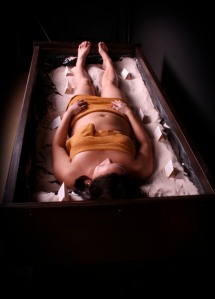It was the night of Santa Con and Greenwich Village was ablaze with red faux velvet, an undulating lopsided ocean of woolly-white artificial beards. The chill in the air was bone-cracking, the wind unforgiving, and it was unlikely that my parents and I had braved the narrow streets of Manhattan’s lower westside to participate in this costumed pub-crawl. Our mission was more deliberate and more solemn. We were bound for the famed Bitter End, in part to do what all Bitter Enders do, to listen to a band play a set, but mostly we were there to say good-bye to a young man lost too early.
On November 3, 2009, Andrew Williamson-Noble, a 20-year old Junior at NYU, committed suicide by jumping from the 10th floor of his university’s Bobst Library. He was lonely, reports said. You might have read about it; you might have noticed the name; you might have seen his picture in the paper; but you probably forgot about Andrew and grouped him in with that flulrry of NYU jumpers that had been lost before — tragic, you probably said and left it at that. We refuse to leave it at that.
My parents and I met Andrew when he was high school student at Irvington. He had been instrumental in getting a fencing team started there and my mother had been its first coach. At the time, she and I were also coaching at Ardsley, and how she managed to survive the two-practice nights I still wonder. I know Andrew’s support made it easier. He had that take-charge attitude that made him a reliable leader, a wicked sense of humour that made him fun to be around, and a passion to win that made him a dangerous competitor. Of the many kids that have come through the fencing teams, Andrew remains one of our favorites.
That night at the Bitter End, as we listened to Ippazzi sing for Andrew, my mother and I , in a teary moment of inspiration, decided to establish an award in his memory — an award that would remind kids that as long as they’re a fencer, as long as they’re an athlete, they’re never alone. For the last few weeks we’ve been immersed in organizing the Andrew Williamson-Noble Spirit Award for Leadership and Sportsmanship — a scholarship that will be bestowed on 2 students from each of the 5 high school teams that make up the New York State Section I Varsity Fencing League. Tomorrow (Sat. Jan 30), at the League championship tournament, we’ll present a total of approximately $3,000 to 11 very deserving athletes.
In the letter to the recipients we say: “The Award remembers his spirit and leadership and recognizes those fencers who, like Andrew, contribute to the sense of community and camaraderie on their team. The best leaders don’t just contribute wins – they are team players who promote unity and inspire excellence…Fencing is a community, a place to belong regardless of background, age, ability, or aspirations.” And it’s true.
I remember walking onto the Columbia campus as a freshman and being terrified about, well, everything. Would my public school education match up to that of my peers? Would I make any friends? These are fears we all have when we start college, but there was one advantage I had most freshman don’t: when I walked through the gates at 116th, I already had 20 friends in my teammates — I’d known most of them since I started fencing as a high schooler. Sure the sport has been the cause of some strife in my life — I can’t say I’ve smiled the whole way through the “athletic journey.” But it always provided me with a safety net to fall back on. It was always a stabilizing force that kept me focused, taught me to recover and to move forward. It taught me how to be the “master of my fate,” “the captain of my soul.”
After high school, Andrew moved onto Drexel before transferring to NYU. In that time, he moved away from fencing — an activity, his mother said, that always brought him joy. We can’t look back on the last few years and say, well if Andrew had been fencing… “What ifs” are entirely inappropriate. We can only look forward with the hope that tomorrow’s award presentation and Andrew’s story touches those it needs to, so that The Andrew Williamson-Noble Spirit Award will remain the only of its kind.



